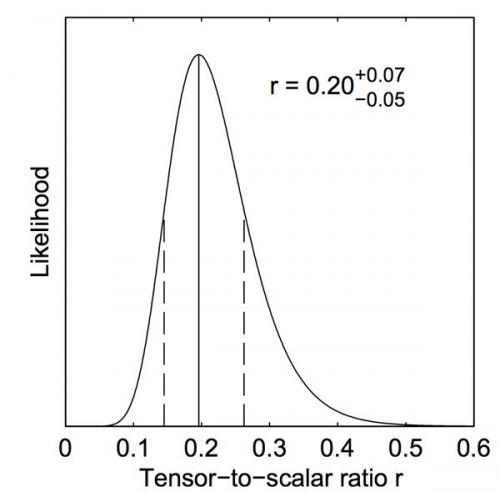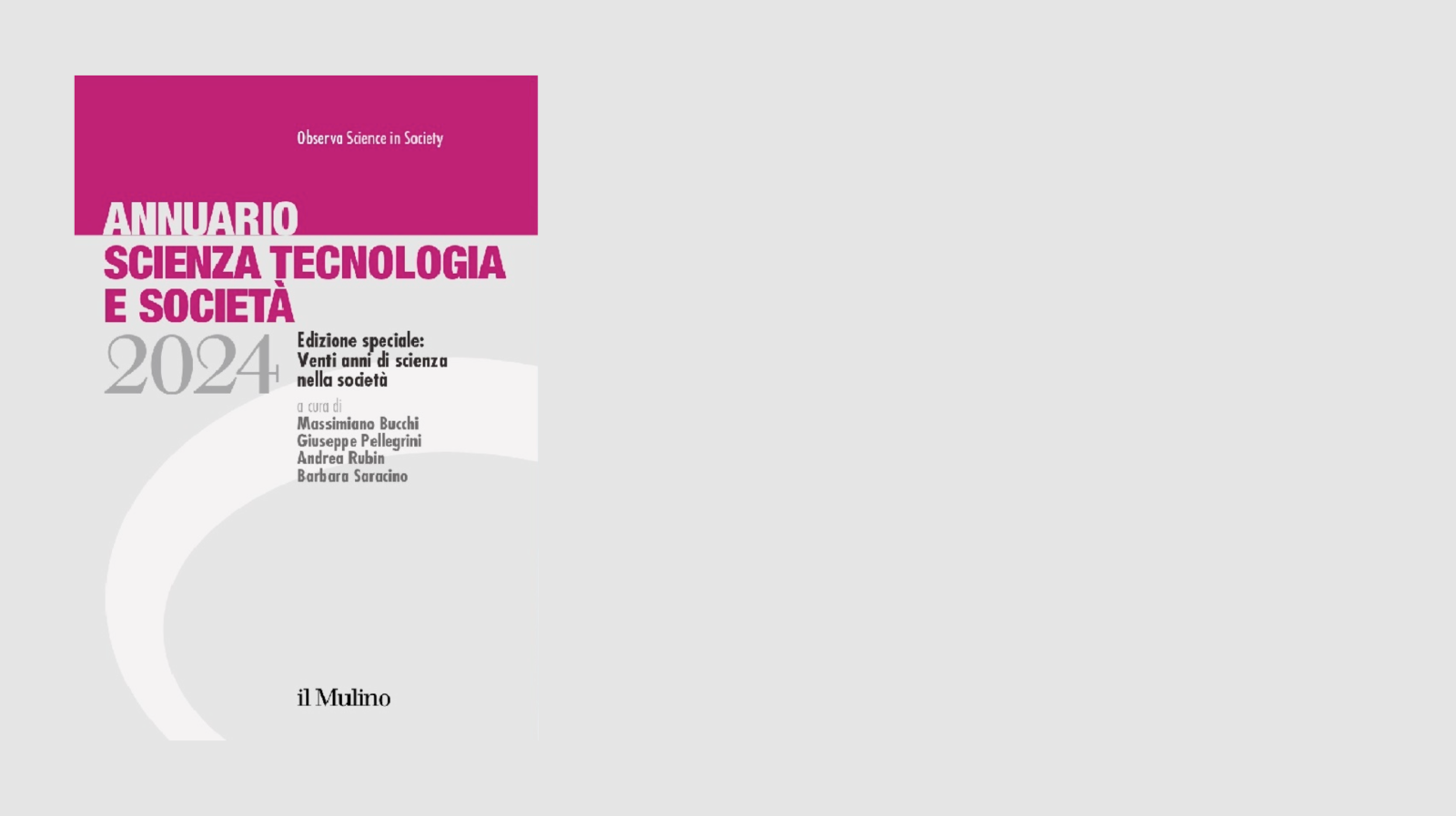A real earthquake has been shacking the international scientific
community over the last few days.
The Harvard-Smithsonian Center for Astrophysics of Boston announced last week,
with a very laconic press release, that a “major discovery” would have been presented during a press
conference on Monday, March 17th. No clues, however, were given on the nature of it. This media strategy, similar to that one used by CERN for announcing the
discovery of Higgs boson, has paid off: among the unavoidable rumours and outbursts
of enthusiasm from one side or scepticism to the other, suspense has been quite
thick for days.
At the press conference stands out John Kovac, cosmologist head
of the BICEP2 experiment (Background
Imaging of Cosmic Extragalactic Polarization 2) in Antarctic: a microwave
telescope that measures temperature and polarisation of the cosmic background
with great accuracy.
Kovac announces that, after three years of work, his team has detected within
the cosmic background radiation the effect of the gravitational waves produced
immediately after the Big Bang; besides, this effect represents a direct and
unequivocal evidence of cosmic inflation. In other words: we saw the very first “wail” of the universe, the
“gravitational echo” of the Big Bang, and we also demonstrated for the first
time that a fundamental cosmological theory is valid.
This astonishing announcement – at least for a physicist – has been immediately reported has a sensational result: “Besides finding life on other planets or directly observing the dark matter, I cannot imagine a more important discovery in astrophysics in the short term for improving our understanding of the Universe” comments Sean Carroll, theoretical physicist of the California Institute of Technology. Someone already talk about the Nobel Prize. But what has been discovered, precisely? And why is it so important? Let’s go in order and draw an overview of situation.
CMB, INFLAtion and GRavitational waves
It all started in 1964, when the US physicists Arno Penzias and Robert
Wilson discovered, by chance, a
weak radiation in the range of microwaves coming from any direction of the sky
in a particularly homogeneous way and without any evident source. Later it was
discovered that the source is the Universe itself: that radiation, then named “Cosmic Microwave Background” (CMB)
represents the first electromagnetic imprint of our Universe. A sort of
photography of the cosmos when it was “only” 380,000 years old. Before that,
matter and radiation where so entangled that the Universe was completely
opaque, unable to release any light.
The CMB became an incontrovertible evidence in favour of the Big Bang theory, which
states that the Universe and the space-time had an origin, about 13.8 billion
of years ago. However, the CMB also gave some troubles. For example: why is it
so homogeneous? Why all the regions of the “child” Universe seem to have agreed
for the same temperature (and then the same density)? A possible answer to this
question was proposed in 1981 by Alan Guth, then researcher of Stanford
University.
Guth’s idea is really simple: at a certain point the Universe started expanding
faster than light, and stopped after a while. Now, we don’t need to understand
why it did it; but in that period of accelerated expansion, called “inflation”,
the Universe’s dimensions changed from those of a subatomic particle to those
of a fruit within an infinitesimal fraction of a second. This huge “cosmic
stretching” levelled everything: as if a cubic centimetre of air into a room
expanded until occupying it all, making the temperature and the density uniform
in the all room. According to the theory of inflation, this is more or less
what happened to the Universe between 10–35 s and 10–32 s
after the Big Bang.
However, despite the inflation being quite efficient, the density of the primordial universe cannot be completely uniform: Heisenberg uncertainty principle imposes the existence of unavoidable quantum fluctuations, that inflation should have amplified and “frozen” on macroscopic scale. These quantum fluctuations are visible in the CMB that in fact shows extremely small inhomogeneities of the order of one part per 100,000: as if the surface of a 10 m deep swimming pool had 0.1 mm high waves. Thanks to the slow and patient action of gravity, from those extremely small density perturbations were originated galaxies, planets, stars and, then, in a way, also us.
Now, the obvious question
is: can we find traces of inflation in the CMB? The answer is: yes! And here we
need to talk about the gravitational waves. Foreseen by Albert Einstein one
century ago from the general relativity, gravitational waves are ripples in the
space-time that propagate at light speed, compressing and dilating the
space-time at their passage. The theory of inflation predicts the emission of
high quantity of gravitational waves that in their cosmic journey can interact
with the photons of CMB leaving their “imprint”. This track is just what has
been observed from the BICEP2 team, and for this reason it represents an
incontrovertible proof of inflation: “Finally – comments Giovanni Bignami,
President of the National Institute of Astrophysics (INAF) – we have an idea of
how the Universe got so big so quickly. Everybody always believed that the
theory of inflation was the only possible solution, but to have an
observational evidence, even though indirect, it’s great”.
But how is it possible to distinguish between the perturbations caused by
quantum fluctuations and those due to gravitational waves? We need to observe
the CMB polarisation, i.e. the oscillating direction of the electric field of
the electromagnetic waves that constitute the cosmic background radiation.
Polarisation perturbations caused by density fluctuations (called “scalar”)
produce radial or circular polarisation patterns: “E-mode” for the physicists;
perturbations caused by gravitational waves (called “tensor”) can produce E-mode
or “swirly” patterns named “B-mode”.

Towards quantum gravity?
Kovac and his team observed
exactly the presence of B-modes within the CMB polarisation, which can be
reasonably ascribed to gravitational waves. CMB B-modes had already been
observed recently by two “rival” instruments: the South Pole Telescope (SPT) in Antarctica and PolarBEAR in
the Atacama Desert (Chile), but at angular scales too small for ensuring that
they were caused by primordial gravitational waves and compatible on the other
hand with the gravitational lensing effect of galaxy clusters. Instead, BICEP2
observations show B-modes at angular scales of about 1° (about double the
apparent diameter of the full Moon), exactly as predicted by the theory of
inflation.
The B-modes observed by Kovac and his team are much more intense than expected.
Physicists describe the “force” of CMB polarisation by means of a parameter
called r, which represents the ratio
between the intensity of scalar and tensor perturbations. Before this
discovery, there was a certain consensus around a value of r = 0.1. The measurements carried out by BICEP2, however, are
compatible with r = 0.2: about double the intensity. Meaning –
according to the physicists – that the energies involved when these
gravitational waves were produced were around 2 · 1016 GeV (gigaelectronvolt).
An enormous value, about one billion times higher than what can be obtained by the
Large Hadron Collider (LHC)
of CERN, the most powerful particle accelerator in the world.
This huge level of energy, according to the most accredited physics models,
corresponds to a phase of the Universe where the fundamental forces of nature
(electromagnetic, strong nuclear and weak nuclear, excluding gravitational
force) were unified.

Kovac and his team’s observations would therefore confirm that also gravity has a quantum nature. Max Tegmark, physicist of the Massachusetts Institute of Technology, has no doubts: “This is the first experimental evidence of quantum gravity”.
Waiting for confirmations
But how solid are Kovac’s team analyses? According to the data they presented during the press conference, quite a lot: statistical significance of observed B-modes is 5,2σ, which means that the chance of being mistaking is less than one over 3,500,000. The most delicate point remains being reasonably sure that the observed effect is produced by primordial gravitational waves: this is not 100% guaranteed, but the sky zone observed by BICEP2 (named “Southern Hole” by the astronomers) is well known for being particularly “clean”, i.e. without dust or other materials that might disturb the CMB polarisation; besides, the observed polarisation characteristics are definitively different from those obtained by the interaction of CMB and cosmic dust.
According to the first responses, the data seem to be valid from a statistical point of view. Naturally, their solidity will need to be tested too, which means that they will need to be compatible with independent measurements. In other words, the discovery will be confirmed only if similar experiments will provide similar results. Marc Kamionkowski, physicist at the John Hopkins University, ensures that “It will be quite easy to rapidly assess if this is a real or fake discovery”: several research groups all over the world are in fact ready to get independent measurements. In particular, there is a lot of expectation for the results of the satellite Planck, of the European Space Agency (ESA), launched in 2009 and able to measure very accurately the CMB polarisation. These data are at the moment under analysis and should be released by next year.
In conclusion, Kovac’s discovery awaits for the evaluation of the international scientific community. Some scientists strongly hope in this result (Alan Guth in primis) and others are already picking holes in the BICEP2 team’s papers. It might happen that the discovery was revealed incorrect: as in September 2011, when the OPERA experiment of Gran Sasso announced the discovery of superluminal neutrinos, and then it was revealed that the measurements of their speed were affected by a systematic error. But if confirmed, Kovac and his team’s discovery will play a crucial role for several reasons:
- for the first time a signal produced after the Big Bang has been observed;
- this result represents the first observational direct evidence of the theory of inflation;
- it supports the idea of the unification of fundamental forces and in particular of quantum nature of gravity;
- it opens a new door for the observation of the cosmos.
Primordial gravitational waves are a new land to discover, that can provide us with fundamental information on the very first instants of our Universe.
Filippo Bonaventura


